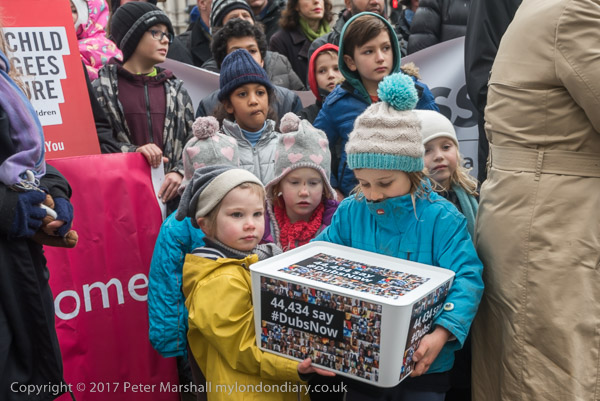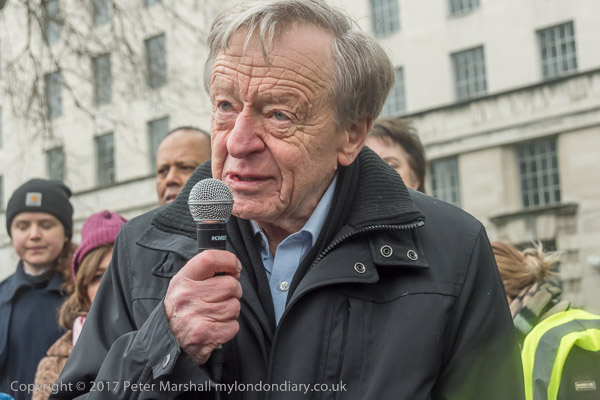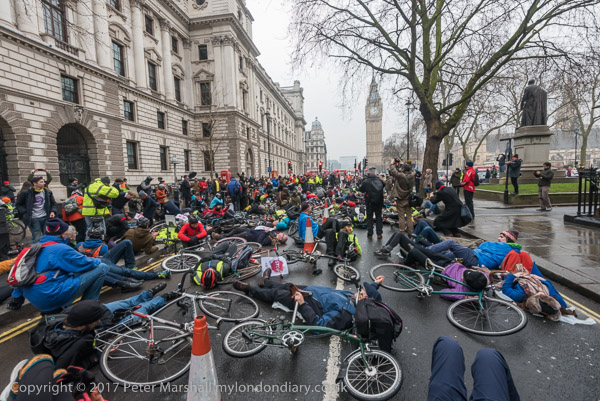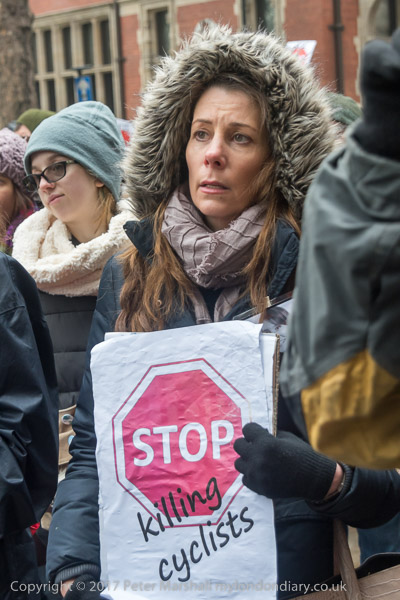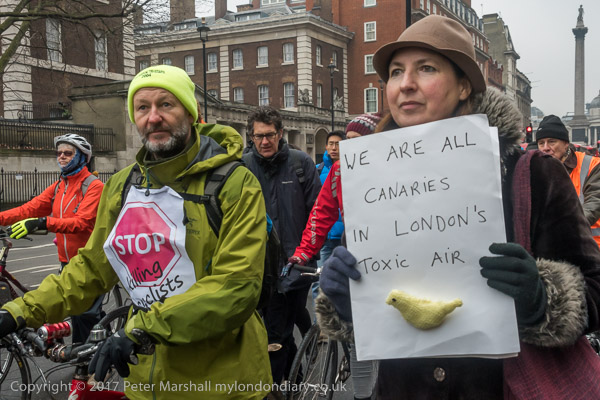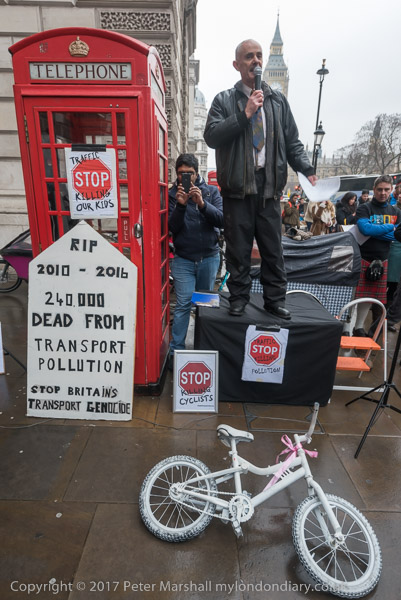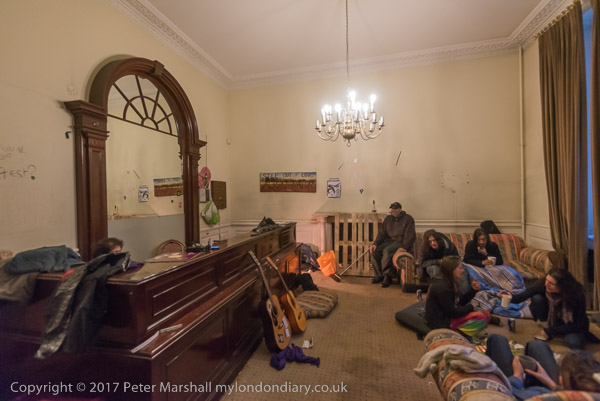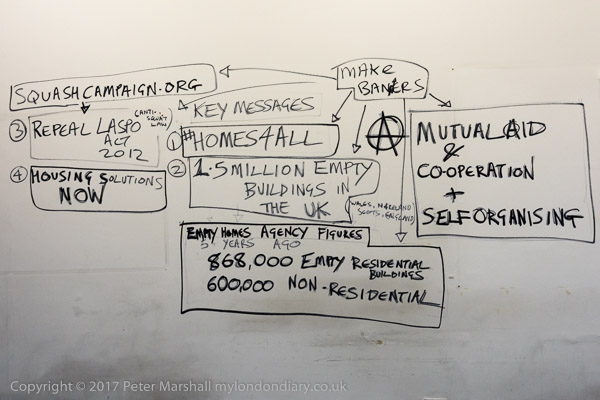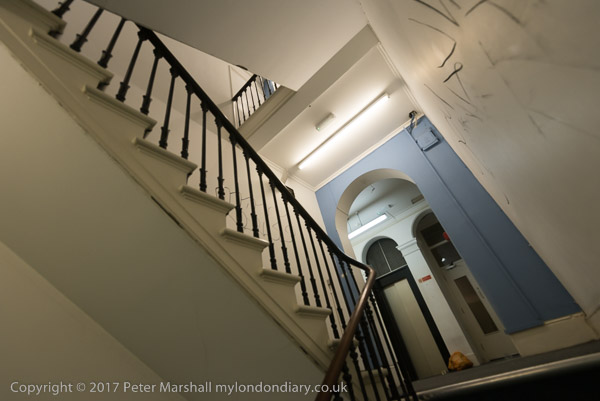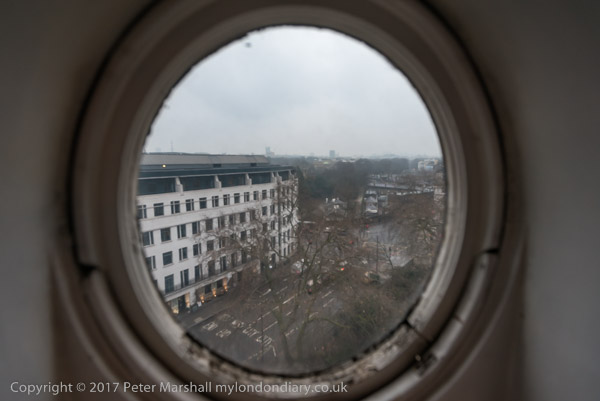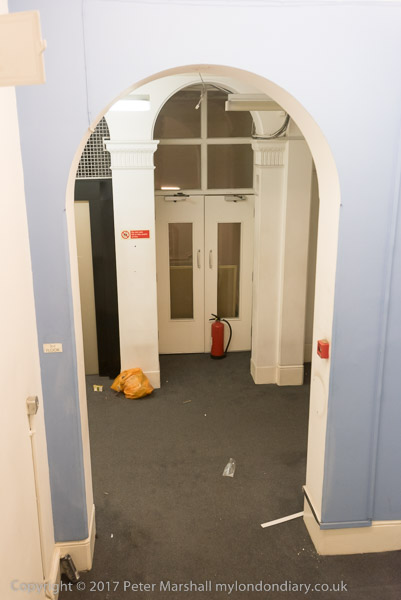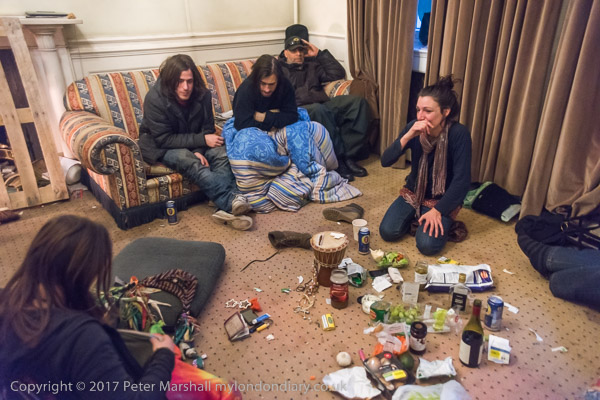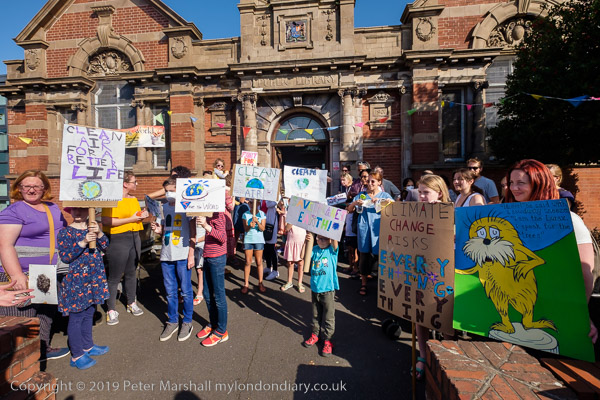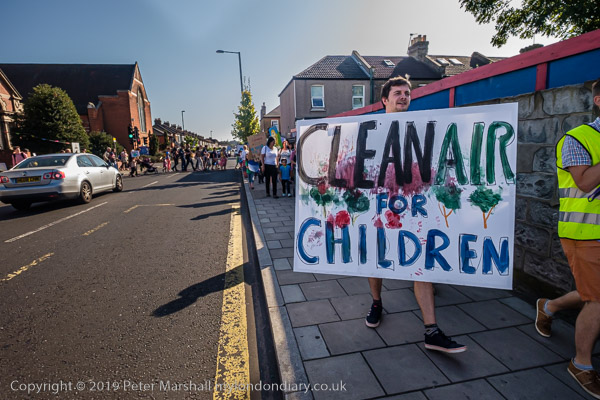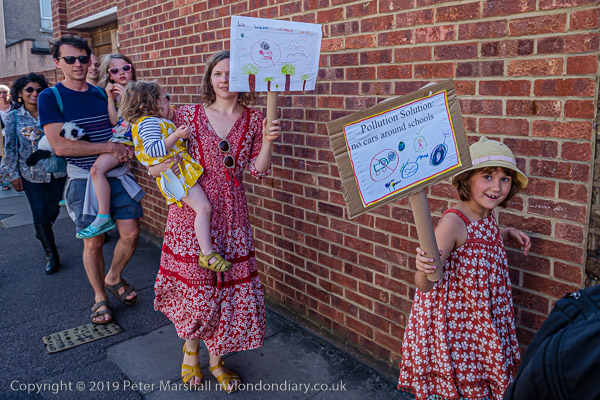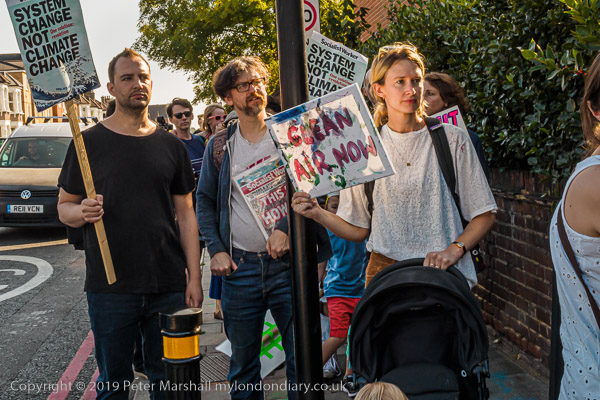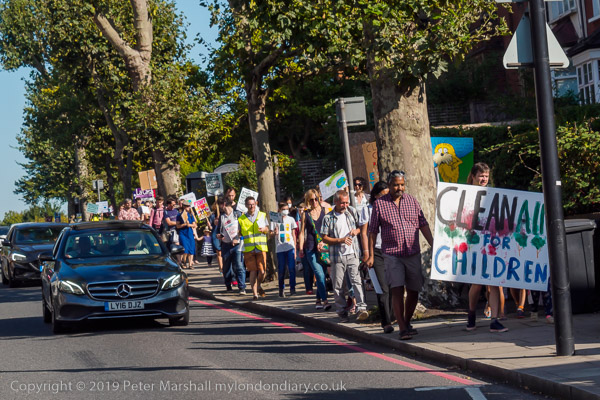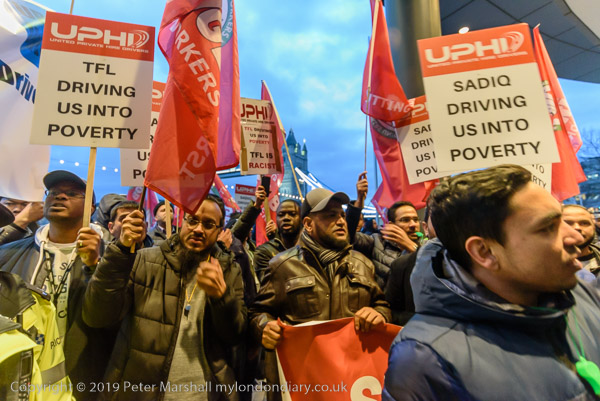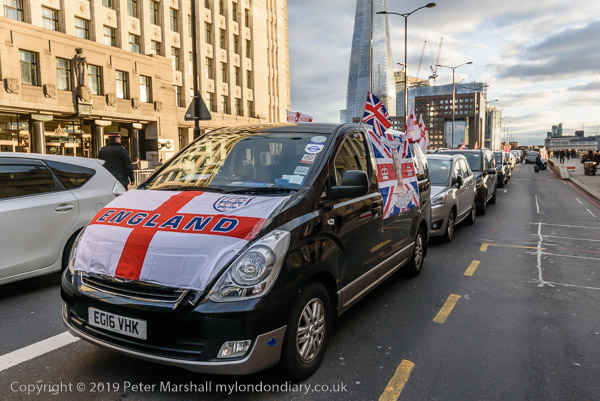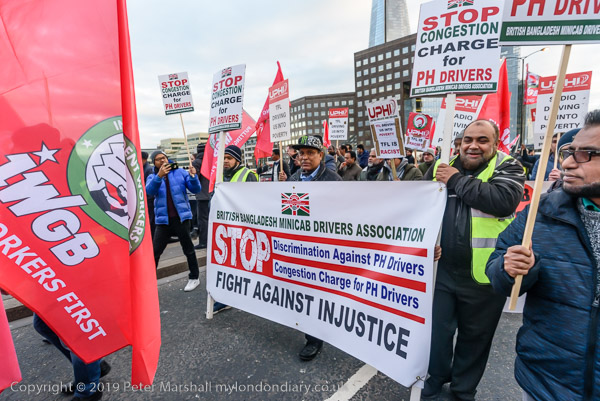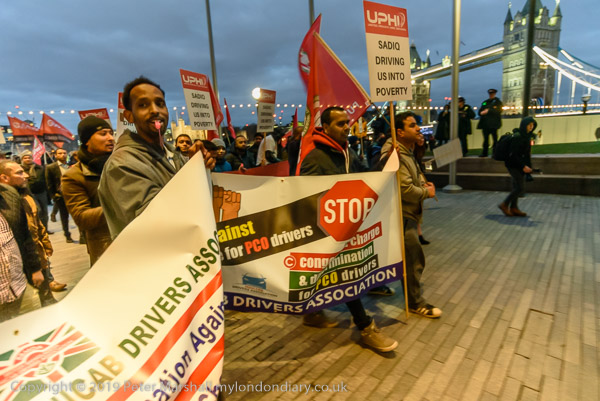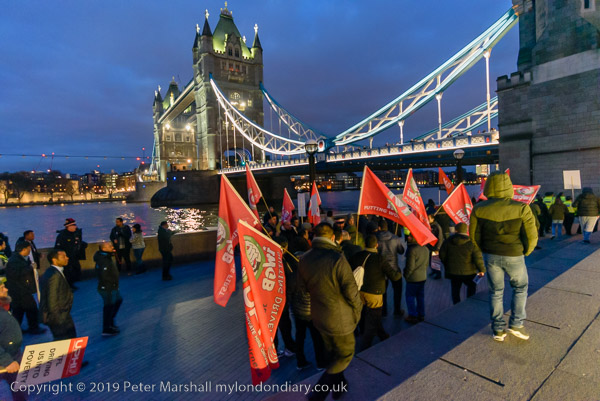The Future For Aviation: The protest at London City Airport on Monday 21st July 2014 by ‘The Future‘, a campaigning group set up to fight climate change and ecological devastation by non-violent protest along with some local residents addressed specific issues related to that airport, but also wider questions about the future of aviation, both still very much with us. A decision is expected shortly by our new Labour government on further expansion plans for the airport following a public inquiry which closed in February.
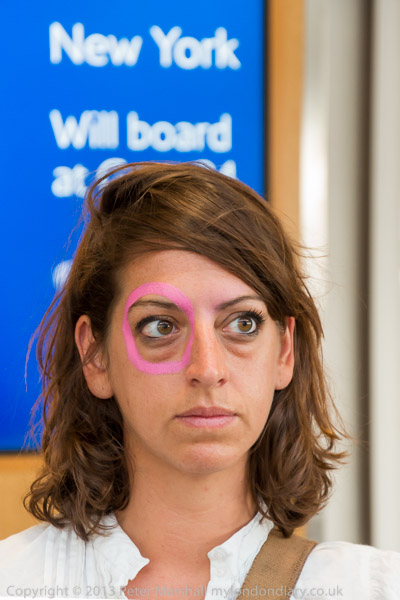
The group used a painted circle around one eye as a symbol that the people are watching those in power, calling on politicians and others to take action rather than let themselves be bought by corporate interests. And they stated “we will judge them if they choose the toxicity of London City Airport over the health of local people and of London.”
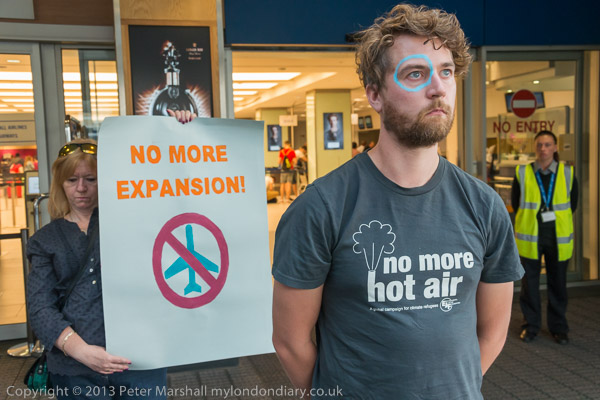
Ten years later, ‘The Future’ are forgotten, and while there has been nothing like enough action the growing signs of the coming catastrophe are just perhaps beginning to get some movement, though still too little and too late.

It should now be clear to every thinking person that we have to find ways to reverse the growth in the aviation industry. To end airport expansion and increasing numbers of flights. Not ideas like changing to bio-fuels or specious calculations over planting trees to compensate for the CO2 generated by flights, nor on the pipe-dream of electric aircraft but quite simply reducing the number of flights.
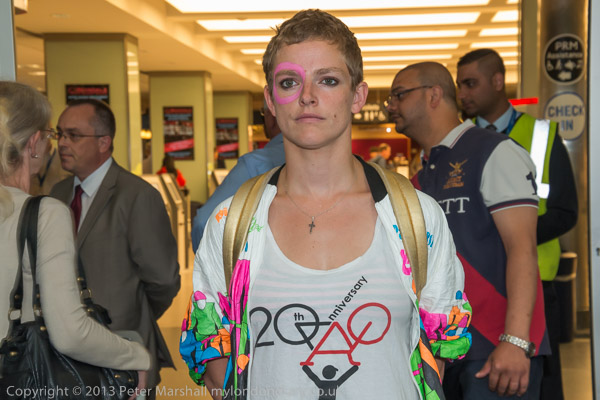
Quite how this can be done is a matter for discussion, but some measures, such as removing the subsidies for aviation and banning incentive schemes with air miles and discounts could be simply implemented.

Heathrow and London City Airport also pose other problems, generating pollution and noise pollution both from their flight and from the traffic and congestion they generate in urban areas of our heavily polluted city.

The history of London City Airport is a case-study in how the aviation industry has operated by deception. When set up it was to be a low traffic site providing limited services between European capitals for business travellers from the nearby Canary Wharf and the City of London using small, quiet aircraft specially built for short take-off and landing.

Even so the Greater London Council opposed its setting up in the former Royal Docks in Newham, surrounded by densely populated areas but were overruled by central government.

Those initial promises have been long been superseded and by 2014 passenger numbers were 25 times as great with the airport no a a major commercial airport, its runway extended to allow use by larger and far more noisy aircraft, including some scheduled trans-Atlantic flights. From a handful of flights a day there were by then around 15 per hour in its allowed operation times. And more new housing in the surrounding areas had made the airport’s site even less tenable.

The airport was then about to make a planning application for further expansion. Then London Mayor Boris Johnson directed Newham Council to turn this down, but in 2016 transport secretary Chris Grayling and communities secretary Sajid Javid overrode the decision and gave the £344 million scheme the go-ahead.

In 2023, Newham Council again turned down further expansion plans but the airport again appealed. A public inquiry took place in December 2023 to February 2024, and a decision was expected by 23rd July 2024. But the general election means that the decision will now be made by our new Labour government. It will be a key indicator in demonstrating if our new government is really serious in its announced intentions to combat climate change and pollution.
More about the protest at ‘The Future’ at London City Airport.
Flickr – Facebook – My London Diary – Hull Photos – Lea Valley – Paris
London’s Industrial Heritage – London Photos
All photographs on this page are copyright © Peter Marshall.
Contact me to buy prints or licence to reproduce.
